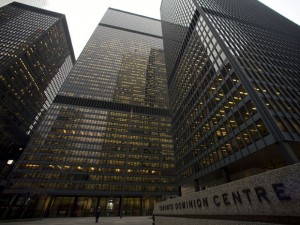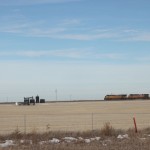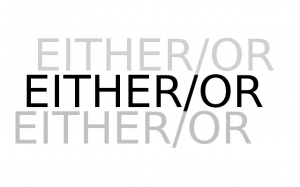One of the pioneers of Modern architecture, Le Corbusier, once famously described the house as ‘a machine for living in.’
One of his contemporaries was Ludwig Mies van der Rohe. I often feel that Mies van der Rohe must have applied this thinking to his office buildings; that he must have considered them to be ‘machines for working in’.

The worst working experience of my career was located in a Mies building. Located in central Toronto, it is a complex that represents to me the pinnacle, or possibly the nadir, of modern architecture. Every day I would arrive at the facility, take the elevator up to the 20th floor and swipe my pass card to be allowed into the cubicle farm.
I worked in a fabric covered gray box. Behind me was another fabric covered gray box. To my left and right, more boxes, stretching the entire length of the building. In front of me was a row of slightly larger glass fronted boxes, and then the pattern was repeated several times across the building.
This was just one floor. Above me, below me, identical farms of gray boxes, stretching up to the 56th floor. One of those floors, the executive one, had mood lighting, but the rest were illuminated by fluorescent strips.
The nature of my work here is fairly irrelevant, and would have been completely forgettable if the words ‘Mortgage Backed Securities’ hadn’t implanted themselves in the public consciousness a year later during the financial crisis. But it was the working environment itself that had the biggest impact on me.
I’ve long been convinced that our environments, our spaces, dictate how we work and how we think. We think about God differently in a vast Medieval cathedral than in a strip-mall chapel. We think about romance differently beside a canal in Bruges than stuck on the TTC in a snowstorm. And where we spend our working lives has an impact on how we think and what we achieve.
I found the Mies van der Rohe the most stifling environment I’ve ever been in. The very nature of the cubicle farm, its ‘machine’ like nature, tends to make people feel like redundant, replaceable cogs. To think freely, to question the system, to consider new ways of doing things, becomes intensely difficult. The most frequently heard phrase I heard from co-workers was ‘it is what it is’. The tasks being performed might have been mundane, boring, or difficult. But it is what it is, we cannot change it.
I would come home every night in a foul mood, and take out my frustrations on my family. I know now that I am a creative worker at heart; I work best when faced with an interesting problem, an idea that hasn’t been implemented before, a bug that no-one else can resolve, a new approach to performing an old task. To work in the giant gray cube was to suffer an unbearable tension between who I was and what I was expected to be.
I lasted six months; then one morning I walked out and never went back. The next few months were challenging, with uncertainty about the future, and about finances, but I never regretted leaving behind the Machine for Working In.
Machines are things, and we use them. But people are people, and we should value them as unique, individual, divinely created beings. And we should be wary of spaces that push us into thinking otherwise.










